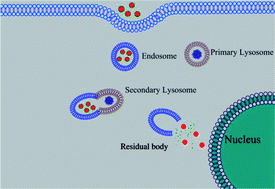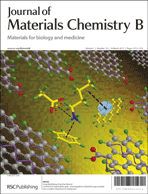The role of endosome evasion bypass in the reversal of multidrug resistance by lipid/nanoparticle assemblies†
Abstract
In the present study, we describe novel lipid/nanoparticle assemblies (LNPs), consisting of a dimethyldidodecylammonium bromide (DMAB) modified poly(lactic-co-glycolic acid) (PLGA) nanoparticle core wrapped in a 1,2-dipalmitoyl-sn-glycero-3-phosphocholine (DPPC) shell. The results of cell cytotoxicity and cellular uptake experiments with doxorubicin (DOX)-loaded LNPs demonstrated that these core–shell polymeric assemblies had the potential to reverse multidrug resistance (MDR). Understanding the processes involved in the endosome evasion is critical for developing nano-drug delivery systems. LNPs encapsuling calcein as a model drug were prepared to explore the intracellular processing. The endocytic process study revealed that the LNPs firstly interacted with the cell membrane followed by turning into endosomes and then accumulated in the lysosome without the drug being degraded and assimilated, and the released drug diffused to the nucleus ultimately. The assemblies were internalized into the cells via lipid raft/caveolae (which is localized by Pgp) mediated endocytosis using a Flow cytometry system (FACS) and endocytic inhibitors. These results suggested that these definite polymeric assemblies might reverse multidrug resistance, mainly via lysosome bypassing and have potential to evade Pgp function. This study presents a foundation for exploring the mechanism of reversing multidrug resistance by nanoparticle assemblies and designing more effective nano-drug carries.


 Please wait while we load your content...
Please wait while we load your content...